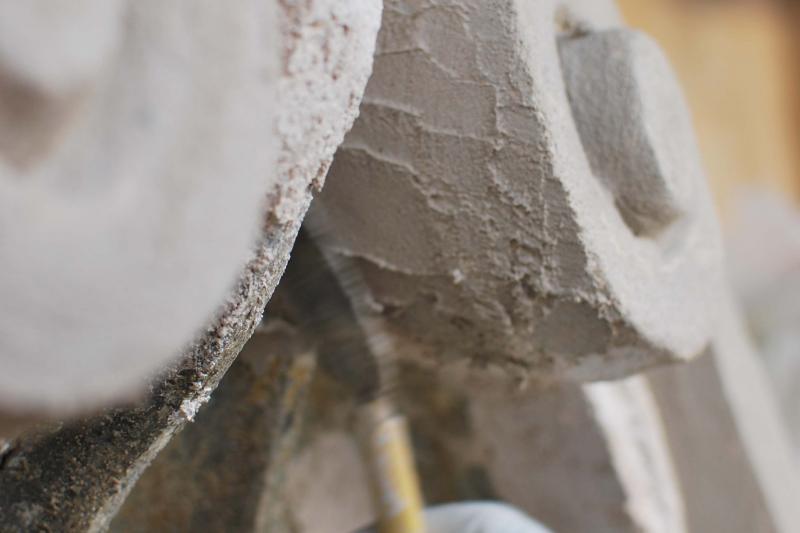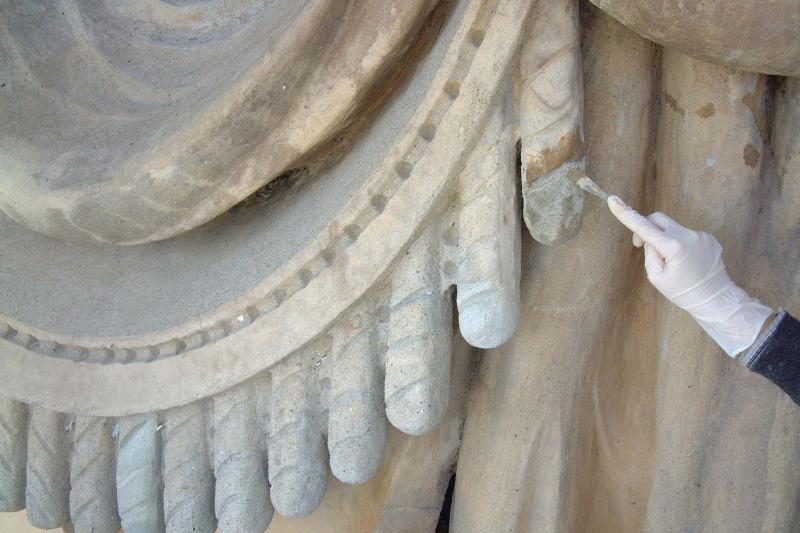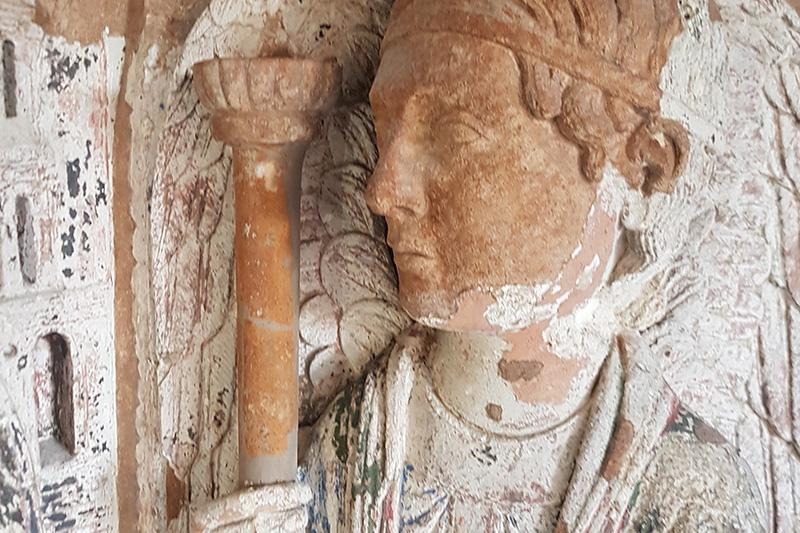Restoration & decoration
Low-relief sculptures
Restoration & decoration
Works
Low-relief sculptures

In architecture, sculpture decorations have always enhanced facades. These strong decorative and aesthetic elements also hold a social dimension, reflecting the evolution of architectural history. Indeed, numerous details such as facade decorations, colors, and architectural styles contribute to the local identity of an area, its history, its influence, and the craftsmanship of its artisans.
The practice of "sculpture à frais" (Sculpture in low-relief) using mortar can be traced back to the decorative trends of the 19th century with natural cement. During this era, architects began using natural cement, also known as "ciment romain," for facade ornamentation. The technique of molding, whether prefabricated or not, already well-mastered with plaster, rapidly extended to the use of PROMPT natural cement. From the 19th century to the early 20th century, facades were adorned with decorations that emphasized openings and cornices, playing with relief. This proliferation of facade decorations, often in the form of friezes running along eaves and window frames, spread across the Rhône-Alpes Auvergne region, through Provence from Marseille to Menton, and even reached Corsica.
SOLUTION
PROMPT natural cement by Vicat, whether used in mortar with the TEMPO retarder or mixed with lime, is employed in decoration and restoration to create sculpted low-relief decorations. These can include the restoration of molds, facade decorations, original sculptures for urban furniture, or decorative elements for galleries or outdoor gardens.
TECHNIQUE
The technique involves working a roughly shaped mortar through modeling and subsequently sculpting on soft materials. The gradual curing of natural cement mortars provides the sculpture with hardness and resistance.
Are you familiar with the technique of "moulage coulé" (cast molding)?
This ancestral technique allows for the creation of original molded decorations with a minimal number of molds. PROMPT natural cement enables adjustable and rapid setting times, cost-effective means for better mold rotation, original decorations, and colors suitable for both new and old substrates.
Another example is molding a cornice drawn from a template, a technique widely used in the 19th century for facade decoration. During that time, architectural styles such as neo-classical or neo-baroque were rich in decorative elements. The molding method using templates replaced the more expensive traditional stucco. The distinct feature of this technique is its extrusion placement using a form called a template. Implementation can occur on-site or in a workshop. With PROMPT natural cement, the setting will be fast, and substantial layer thickness can significantly save time. Moreover, this technique respects old substrates, allowing for more aesthetics and maneuverability.
Fields of application

The use of PROMPT natural cement can be applied to decorate historic structures, including facade ornamentation, decorative elements for landscaped gardens, and sculptures.
Advantages of its application

PROMPT natural cement by Vicat, employed in the creation of sculpture low-relief decorations, offers numerous advantages due to its rapid setting, distinctive ochre stone color, fine texture, and its ability to withstand weathering, primarily owing to its remarkable durability.
Advices
Our recommendation for creating volumetric structures is to first install stainless steel, brass, or fiberglass reinforcements. For the finishing touch, a whitewash or slurry can be applied if a uniform color and smooth appearance are desired.
Achievements
Discover our realized projects
Product
Discover everything about PROMPT natural cement
The only cement with strengths at the end of setting, it allows for the quickest return to service. In formulations, it also acts as a powerful accelerator for all hydraulic binders (lime, Portland cement, calcium sulfoaluminate cement, calcium aluminate cement).
